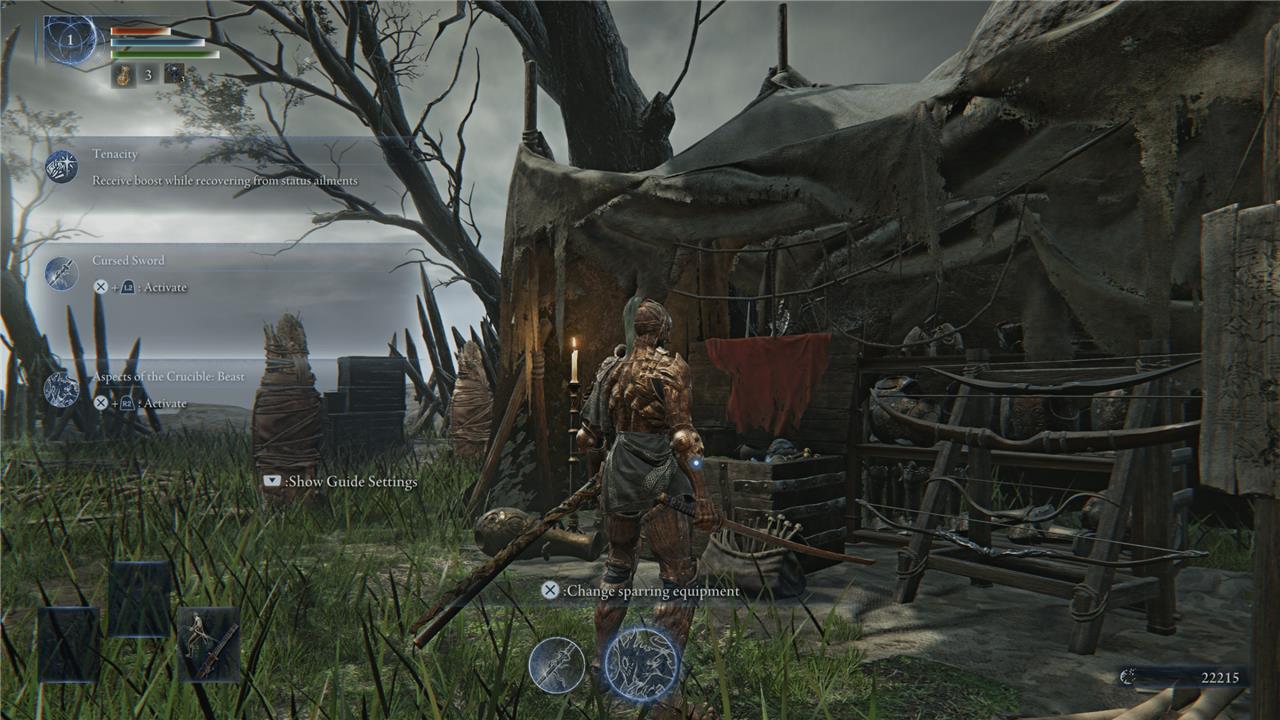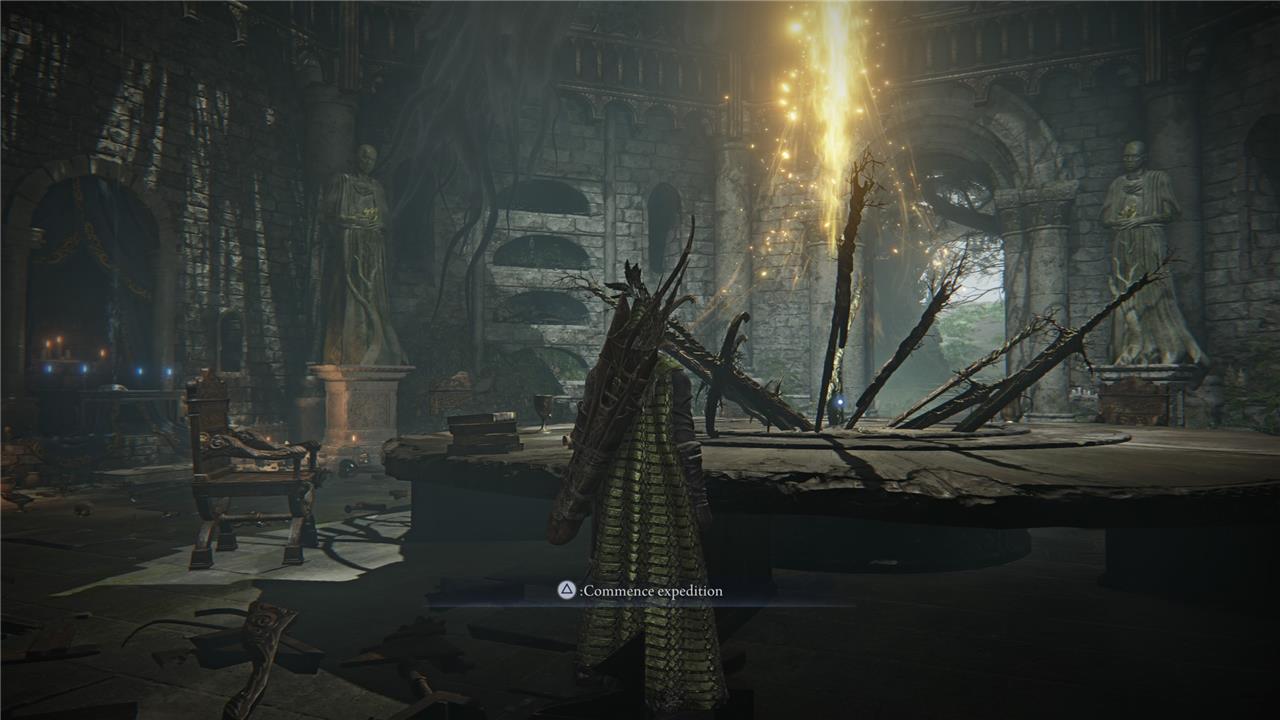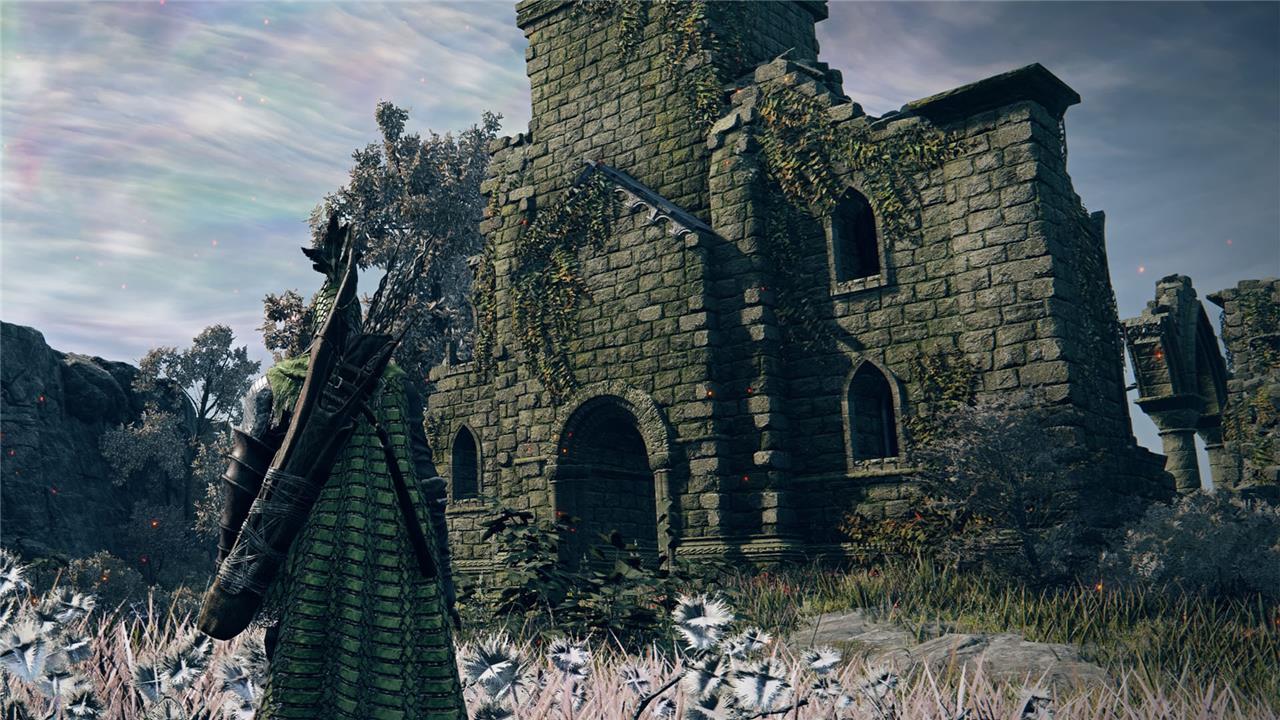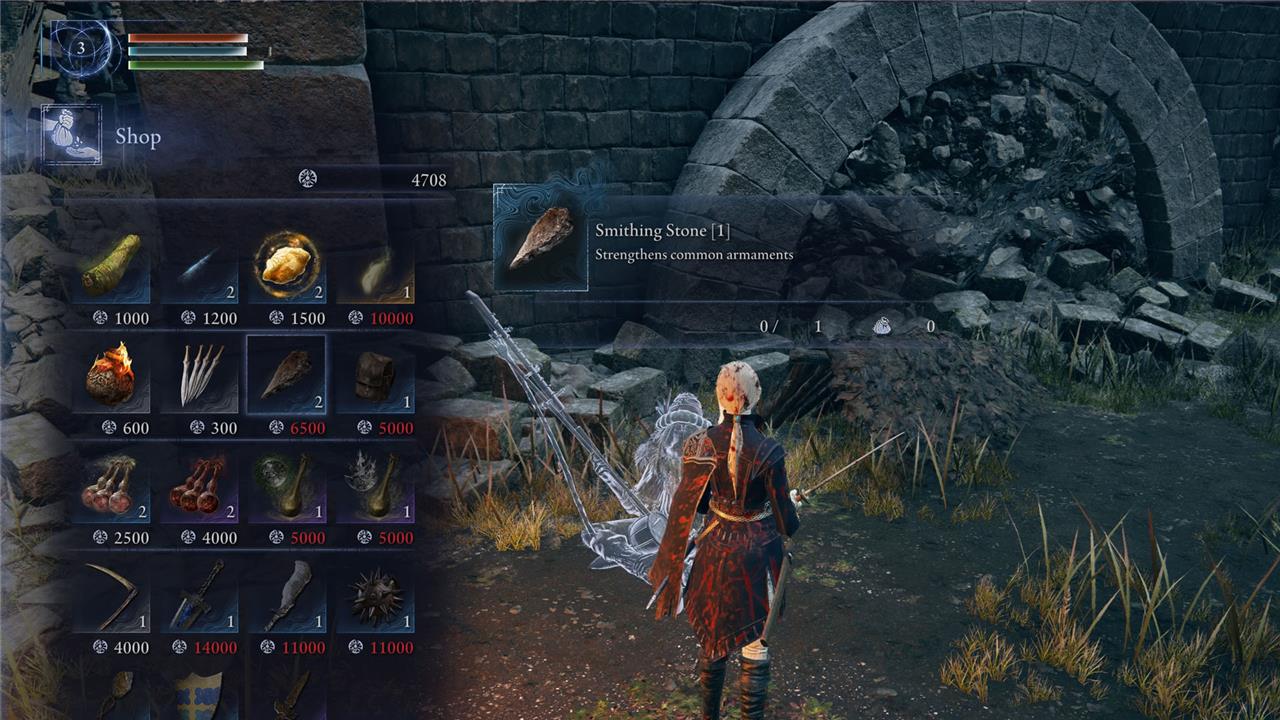Ready to dive into the ruthless world of Elden Ring Nightreign? Before you step into Limveld’s deadly expanse, these 9 beginner’s tips will equip you with essential strategies-from mastering your Nightfarer’s unique skills and navigating the shrinking map, to optimizing your team composition and gearing up efficiently before nightfall’s brutal boss battles. Whether you’re a newcomer or a seasoned Elden Ring veteran, this guide will help you survive the race against time and conquer the Nightlords with confidence.
To help you make the most of your time in Limveld, this guide will teach you some starting tips we’ve gleaned while exploring Elden Ring Nightreign for dozens of hours.
Go to the Sparring Grounds
The Sparring Grounds in Elden Ring Nightreign are an essential training area located within the Roundtable Hold, designed to help you master your chosen Nightfarer before heading into the dangerous expeditions. Here, you can practice your attacks, combos, and abilities against training dummies or animated enemies, allowing you to familiarize yourself with your character’s unique skills and weapon movesets in a safe environment. The Sparring Grounds also let you experiment with different weapons, passive abilities, and character builds, which is crucial for optimizing your performance and ensuring you don’t let your team down during real battles. Taking the time to train here will significantly improve your combat readiness and give you a strategic edge when facing the Nightlords and other threats in Limveld.

Elden Ring Nightreign starts with a (skippable) tutorial that teaches you the basics with the Wylder class. But before heading out on your first expedition against Gladius, Beast of Night, you should spend some time with your character at the Sparring Grounds, located just outside of the Roundtable Hold.
Trying to learn the character skills and ultimate arts on the fly out in the field, instead of in the safe confines of the Sparring Grounds, is a huge disservice to your fellow Nightfarers – you really don’t have any spare time to dillydally while on an expedition. Know your Nightfarer’s skill set before you queue up for matchmaking.
Plus, while in the Sparring Grounds, you have access to virtually all weapons, spells, and skills that you can find on an expedition, which will give you hands-on time with loot and abilities you may find out in the field, helping inform your builds.
Play with a group – and stick with them
Playing Elden Ring Nightreign with a group and sticking together is crucial for survival and success. A well-balanced team composition-typically including a tank, melee fighters, and at least one ranged character-ensures that you can cover each other’s weaknesses and quickly revive fallen teammates from a safe distance. Coordination and understanding each other’s abilities allow for efficient combat, especially during intense Nightlord battles where teamwork and quick revives can prevent a wipe. Staying close helps maintain team chemistry, making it easier to manage stamina, positioning, and ultimates effectively, which is vital given the game’s fast-paced and high-stakes nature.

Every aspect of Nightreign is balanced around teams of three players, so stay with your multiplayer group to maximize your damage output and opportunities to revive teammates. While exploring Limveld, you’ll want to use the in-game minimap often, placing pins to show where you’d like to go next. Going off on your own puts you at great risk of dying, losing runes, and getting knocked down levels. Plus, the more often you go down, the harder it is for your teammates to revive you when it really matters (in the game’s boss battles).
It’s a sprint, not a marathon
Elden Ring Nightreign is a fast-paced game where every run feels like a sprint rather than a marathon. You have a limited time during the day to explore, gather resources, level up, and prepare before nightfall brings deadly bosses and intense battles. Efficiency and quick decision-making are crucial, as the map shrinks and opportunities become scarce. Staying coordinated with your team and planning your route carefully will help you maximize your progress in the short window you have each run.
Elden Ring Nightreign is incredibly fast paced. You’ll want to sprint just about everywhere as you try to grab loot, earn runes to level up, grab charges for your healing Flask of Crimson Tears, and take down low- and mid-level bosses (Enemies and Great Enemies, respectively) to earn better loot and power-ups.
Plan two steps ahead, so you’re not wasting time backtracking or potentially losing out on precious items and power-ups that will get swallowed up by the Night’s Tide as it closes in around you.
Get thee to church
When starting Elden Ring Nightreign, prioritizing visits to churches is crucial for survival and progression. Churches serve as key locations where you can increase your Flask of Crimson Tears charges, effectively boosting your healing capacity during battles. Upon reaching a church, your character is fully healed, and interacting with the altar grants an additional flask charge, which is vital for enduring tough encounters and boss fights. These churches are scattered around the map and tend to be near the edges or specific fixed points, so making your way to them early in the expedition ensures you have enough healing resources as the game progresses. Ignoring churches can make later stages significantly harder, as having more flask charges greatly improves your chances of survival.

The best way to stay in the fight is to have as many flask charges as possible. You can find charges for your Flask of Crimson Tears at churches, which are a must-stop location on Limveld’s map. Plan your routes around church locations (our guide to all churches in Elden Ring Nightreign can help), and don’t leave any flask upgrades unclaimed.
Kill those Scarabs!
To succeed in Elden Ring Nightreign, one of your early priorities should be to hunt down and kill the Teardrop Scarabs. These elusive creatures drop valuable Talismans that provide crucial passive bonuses to your character, enhancing your survivability and combat effectiveness. Locating Scarabs can be aided by gathering information at nearby Forts, which often reveal their spawn points. Prioritizing the elimination of these Scarabs not only boosts your power but also gives you an edge as you prepare to face tougher enemies and bosses during your expeditions.
If you’ve played a lot of Elden Ring, you might just run past the dung beetle-like bugs that drop smithing stones, ashes, and teardrops. But Scarabs in Nightreign are worth chasing down.
The primary means for acquiring Talismans, items that offer passive stat boosts and protection against ailments, is from Scarabs, so definitely slay them when you see them. You may come across them randomly, but you can also see them on the Limveld map if you track down a map at Forts.
Pay attention to Nightlord resistances (and where to find them)
When preparing to face Nightlords in Elden Ring Nightreign, it’s crucial to pay close attention to their resistances and weaknesses to optimize your strategy. For example, Heolstor the Nightlord, the final boss in the Night Aspect expedition, is notably weak to Holy damage while being resistant or immune to poison and other damage types. Understanding these elemental affinities allows you to choose the right weapons and buffs, significantly increasing your chances of success. You can often find hints about a Nightlord’s weaknesses in their expedition descriptions at the Roundtable Hold, and planning your loadout accordingly is key to overcoming these challenging foes.
Many of the game’s bosses have weaknesses to certain affinities and status ailments – like poison, lightning, and fire – so you should have a weapon or ability that capitalizes on those weaknesses. One way to do that is through relics, the gems that confer abilities and starting perks for your Nightfarer. If you’re facing a boss that’s weak to poison, equipping a relic that grants poison damage to your starting weapon or equips you with poison grease, for example, can be a big help.
Additionally, pay attention to the affinity and status ailment icons that display on locations on the game’s minimap. If you’re hunting for a lightning weapon (or lightning grease, or a lightning throwing pot), head to a location with the little bolt of lightning. You may find an item or items with that affinity there, which will help you at the end of each expedition.
Spend your runes wisely
When playing Elden Ring Nightreign, spending your runes wisely is crucial to your survival and progression. Early on, prioritize leveling up your Nightfarer by using runes to boost your stats, as even a single level can significantly improve your combat effectiveness against enemies and bosses. Additionally, invest in flask upgrades at churches to enhance your healing capacity, since you cannot replenish flasks during boss fights. Remember that runes cannot be carried over after an expedition ends, so make sure to spend all your runes before the final battle to maximize your power. Efficient rune management ensures you are well-prepared for the escalating challenges as night falls and the Nightlord awaits.

Use ’em or lose ’em, I say! Rather than hoarding runes, I like to spend them to level up as soon as possible, ensuring my Nightfarer is at their peak as soon as possible. I can spend whatever’s leftover on consumables and maybe an upgrade for my weapon. That said, I’ve found that having the required number of Smithing Stones needed to upgrade my weapon is a pain, and I often wind up not using them at all, as more and more powerful loot often awaits after every miniboss battle.
Go directly to Evergoal, reap rewards
To go directly to Evergoal and reap rewards in Elden Ring Nightreign, focus on efficient route planning and quick farming during the daytime phases. Evergoal, being a key point of interest, offers valuable runes, armaments, and passive traits that can significantly boost your Nightfarer’s power before facing the Nightlord. Prioritize leveling up early by defeating nearby enemies and gathering resources, then head straight to Evergoal to maximize your gains. This strategic approach ensures you enter the night battles stronger and better equipped, increasing your chances of survival and success in the challenging expeditions of Limveld.
Evergaols in Elden Ring were sometimes pretty tough! But in Nightreign, with a full complement of three Nightfarers, they can be a breeze. Evergoals – which require a Stonesword Key to activate – are a great place to earn a very quick upgrade or special weapon with very little risk.
Press the skip button
When you encounter a challenging section or unwanted cutscene in Elden Ring Nightreign, pressing the skip button can save you valuable time and keep the momentum of your run. This feature is especially useful in a game where speed and efficiency are crucial, as Nightreign is a race against the clock to gear up and prepare before night falls and you face powerful bosses. Skipping non-essential content allows you to focus on leveling up, gathering resources, and progressing through the map swiftly, which is key to surviving and thriving in the fast-paced environment of Limveld.
What are the top beginner tips to survive Elden Ring Nightreign’s toughest challenges
Top Beginner Tips to Survive Elden Ring Nightreign’s Toughest Challenges
-
Level Up Quickly and Wisely: Your first priority should be to reach at least level 2 as soon as possible, since the power gap between level 1 and 2 is huge. Aim to be around level 5 by the end of the first day and level 10 by the second to handle tougher enemies and bosses effectively.
-
Understand and Use the Map and Circle Mechanics: The map shrinks progressively due to the Night’s Tide, which damages you outside the safe zone. Learn the map layout, use Spiritsprings to navigate vertical terrain quickly, and plan your route to clear outer areas first before moving inward as the circle contracts.
-
Stick Together as a Team: Nightreign is balanced around team play. Coordinate roles-include a tank (e.g., Wylder, Raider, Guardian) and a ranged reviver (e.g., Ironeye, Recluse) to support teammates from a distance. Reviving fallen allies quickly and sticking close improves survival chances dramatically.
-
Master Character Skills and Ultimate Arts: Each Nightfarer has unique skills and ultimate abilities that can turn the tide in battle. Learn their cooldowns and use supportive skills like “Wings of Salvation” alongside high-damage attacks such as Wylder’s “Onslaught Stake” to maximize effectiveness.
-
Use Consumables Generously: Don’t hoard consumables like healing items or buffs. Use them liberally during boss fights and tough encounters to increase survivability and damage output.
-
Prioritize Loot and Upgrades: Early on, focus on clearing Ruins for good loot and avoid overly difficult areas like Castles until you’re stronger. Use Sites of Grace to upgrade flasks and weapons with smithing stones, especially before final boss fights each night.
-
Manage Revives Strategically: When downed, crawl towards other fallen teammates to make group revives faster and safer. Players with powerful ultimate revives can turn the battle around if used wisely.
-
Keep an Eye Out for Buffs and Talismans: Look for glowing flowers, fire butterflies, and scarabs that drop talismans providing permanent buffs. These can significantly improve your offensive or defensive capabilities during a run.
-
Know When to Retreat and Regroup: If a fight is going badly, retreat to safer areas to level up and regroup rather than risking a wipe. The game rewards smart pacing and route choices over reckless aggression.
Following these tips will help you navigate the fast-paced, high-stakes world of Elden Ring Nightreign and increase your chances of defeating the Nightlord bosses.
How do I choose the best Nightfarer for my playstyle early on
To choose the best Nightfarer for your playstyle early on in Elden Ring Nightreign, consider these key points:
-
Ironeye is ideal if you prefer a ranged, dexterity-based playstyle. As an archer, Ironeye excels at attacking from a distance, marking enemies to increase team damage, staggering foes, and reviving allies from afar. This makes Ironeye a great pick for players who like to support teammates and control the battlefield from safety.
-
Wylder is the balanced and beginner-friendly choice. He scales well with Strength and Dexterity, prefers greatswords, and offers versatility with melee and ranged options. Wylder also has a one-time death buffer ability, making him forgiving for newcomers who want a straightforward, aggressive melee experience with some mobility thanks to his grapple claw.
-
Raider suits players who enjoy tanky, heavy-hitting melee combat with colossal weapons like greataxes and hammers. He deals massive damage but is slower and requires taking hits to maximize output. Raider pairs well with fast, bursty teammates for a complementary team dynamic.
-
Guardian is another tanky melee option, favoring halberds and shields. He excels at drawing enemy attention and protecting teammates, making him a strong frontline leader for coordinated teams.
-
For magic-oriented players, Recluse, Duchess, and Revenant offer spellcasting abilities and unique skill sets that cater to dextrous or arcane builds.
-
Since Nightreign encourages team synergy, also consider who your teammates pick and which Nightlord boss you will face, as some Nightfarers synergize better with specific strategies and relics.
-
Ultimately, trying out multiple Nightfarers to see which fits your preferred combat style and team role is recommended, especially since each has unique skills, ultimates, and starting equipment that shape gameplay.
In summary, if you want a reliable ranged support, pick Ironeye; for a versatile melee starter, choose Wylder; for heavy melee damage, Raider or Guardian; and for magic users, Recluse, Duchess, or Revenant. Your choice should align with your combat preferences and team composition goals.
